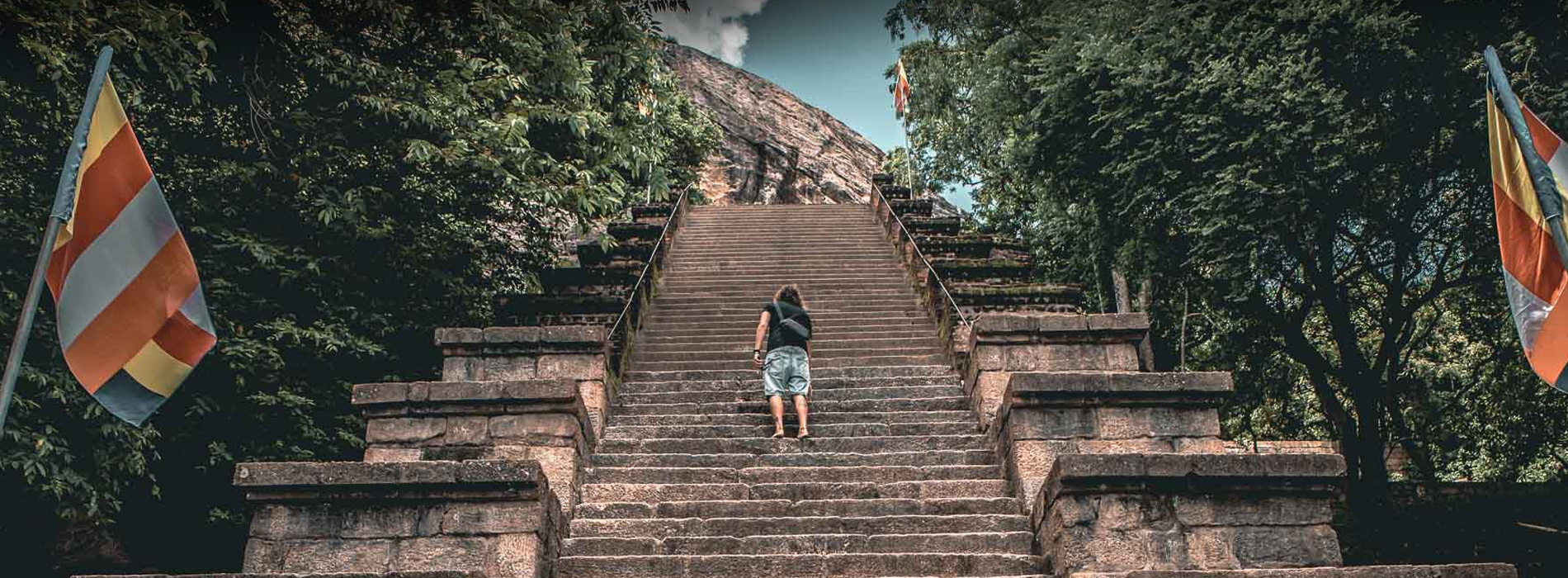
Sri Lanka - Emerald Isle
Sri Lanka or Ceylon is often called ‘Emerald Isle’ of the Indian Ocean mainly due to its variation of greens within a tiny island. Many ancient travelers from, trader and explorer, Marco Polo to modern astronaut Arthur C Clerk described Sri Lanka as the finest island of its size in all the world and small universe.
The ancient cities with stupendous monuments, huge man-made tanks, and impressive architecture and sculpture in Sri Lanka bring memories of great Asian civilization. The beautiful beaches, verdant countryside, and mist shrouded hill country along with tropical wildlife and amazing bio-diversity are common in this paradise island.
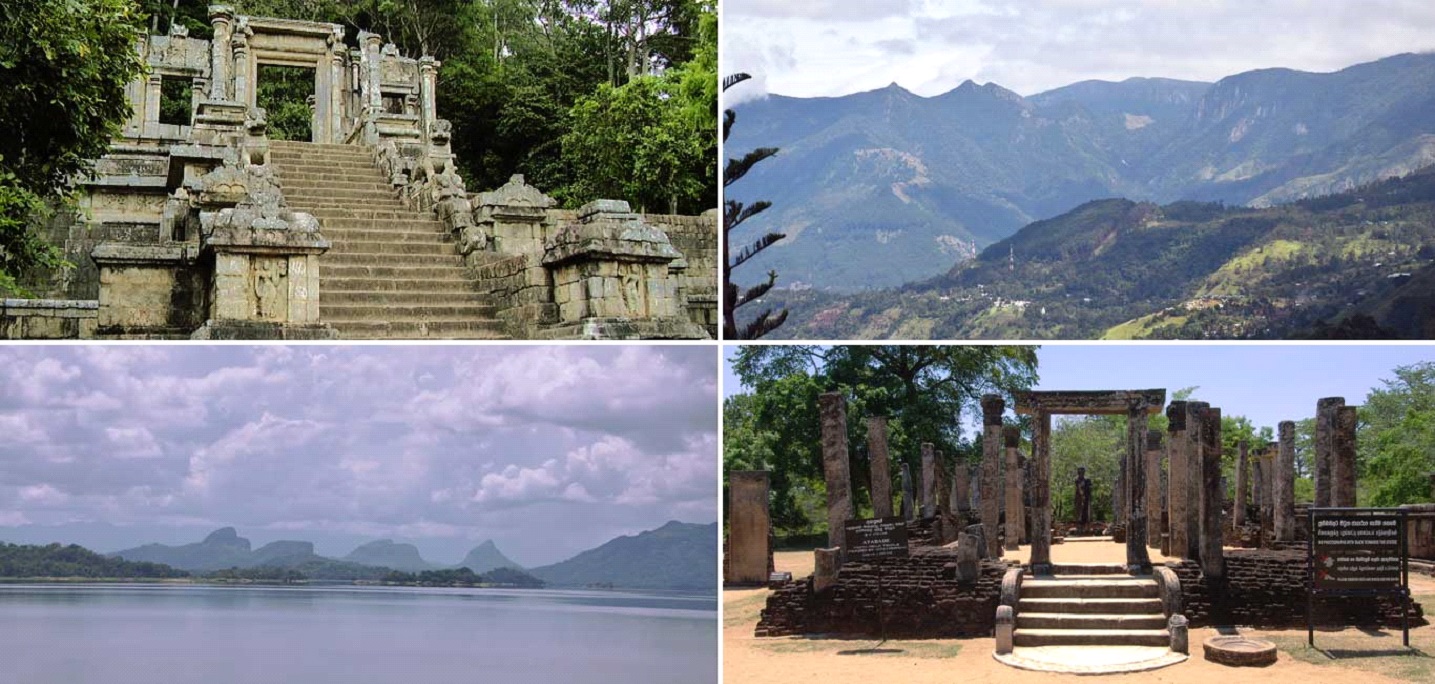
Geography
Sri Lanka lies close to the southern tip of the Indian Peninsula by a narrow stretch of sea, 40 km at its narrowest point. It locates between 5° 55' and 9° 55' north of the equator and between the eastern longitudes 79° 42' and 81° 52'. A 64,740 km2 of land and 870 km2 of water comprise the total land area of 65,610 KM2 in Sri Lanka. Its coastline is 1,340 km long. It stretches over 433km from north to south and its widest point is 244km. The central hill country rises from a little south of the centre of the island to a height of over 8000ft (2440 m) and is surrounded by the coastal plain. The highest mountain is Mt Pidurutalagala (2524m) rising above Nuwara Eliya. However, the Mt. Sri Pada or Adams Peak at 2243m is better known and spectacular. The Mahaveli, Sri Lanka’s longest river, has its source in this mountain range and runs into the sea near Trincomalee in the east.
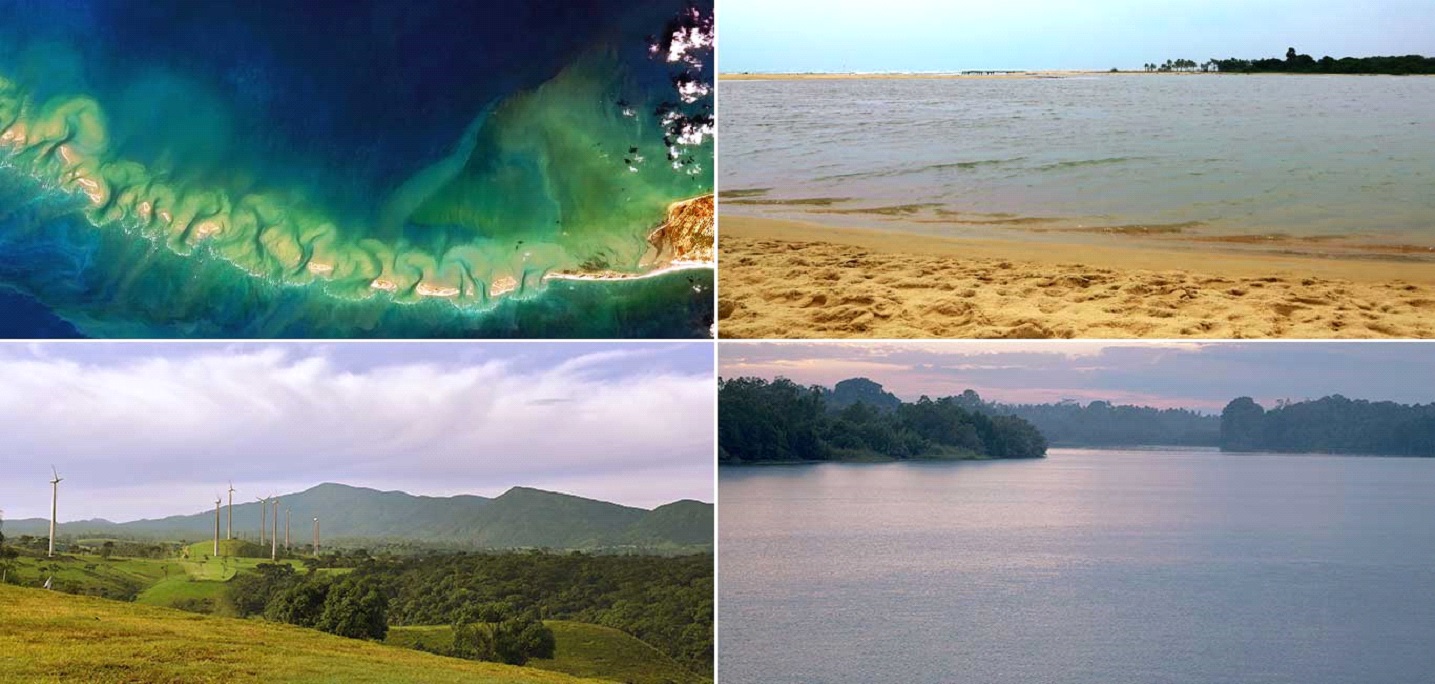
Climate
The island enjoys a pleasant tropical climate relatively hot in the low lying area with an average temperature of 27°C in Colombo and pleasantly cool in the central highlands with temperature going down to 16°C in central hills. The climate of Sri Lanka is dominated by two monsoons which occur from May to August by southwest monsoon followed by east-west monsoon from October to January. That favours Sri Lanka always has the right beach season somewhere on the coast. There is also an inter- monsoonal period when rain and thunderstorms can occur in many parts of the island.
The largest climatic area is the low country dry zone which includes the northern part of the island together with much of its eastern side. The area experiences the annual rainfall between 600 and 1900 mm by the east-west monsoon while the southwest monsoon records the average 5000 mm rainfall in the southwestern lowlands.
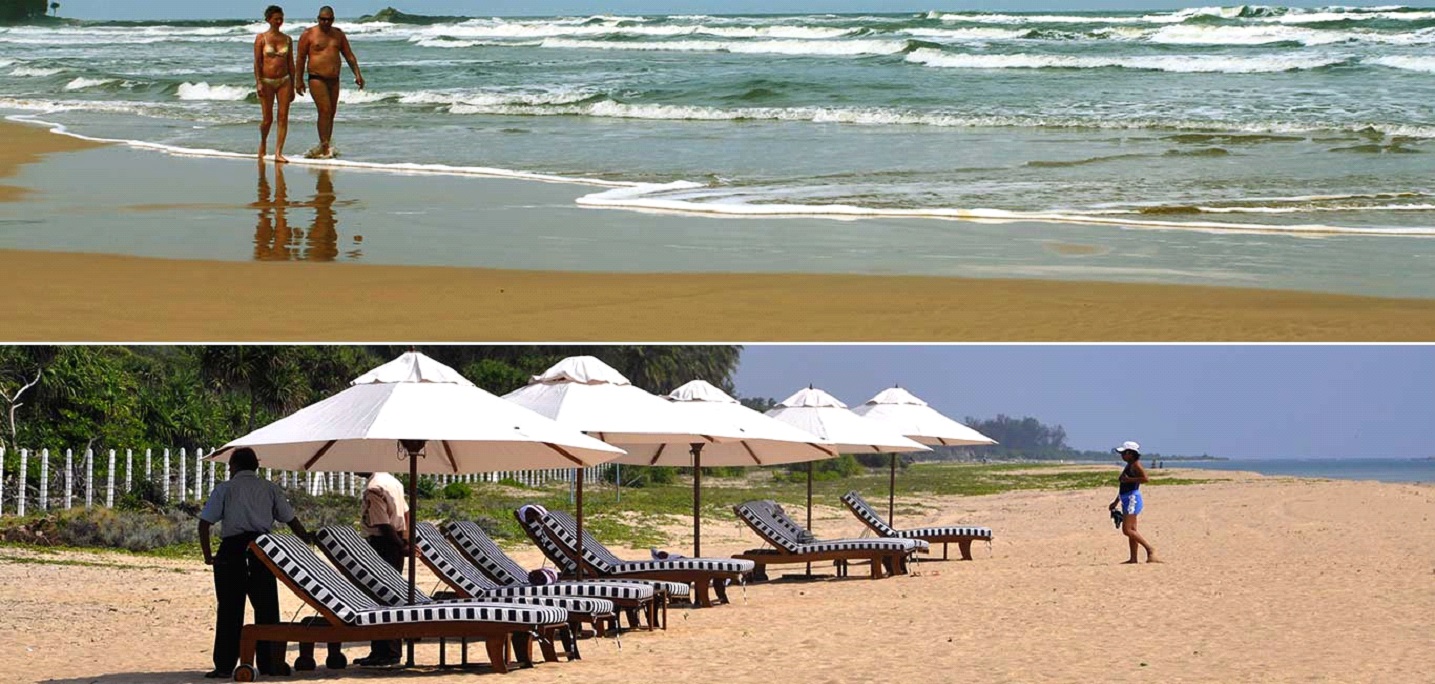
Population and People
The population of Sri Lanka is around 21.8 million of whom the majority is Sinhalese (74%). Other ethnic groups are made up of Sri Lankan Tamils (12.6%), Indian Tamils (5.5%), Moors, Malays, Burghers (of Portuguese & Dutch descent), and others (7.9%). Sri Lanka's official languages are Sinhala and Tamil, although English is commonly used, widely spoken, and understood. The major religions in Sri Lanka are Buddhism (69 %), Hinduism (15 %), Christianity (8 %), and Islam (7 %). The currency is the Sri Lankan Rupee. Sri Lanka is characterized by high levels of literacy (90 percent), life expectancy (75 years), and low infant mortality that are comparable to those of developed countries
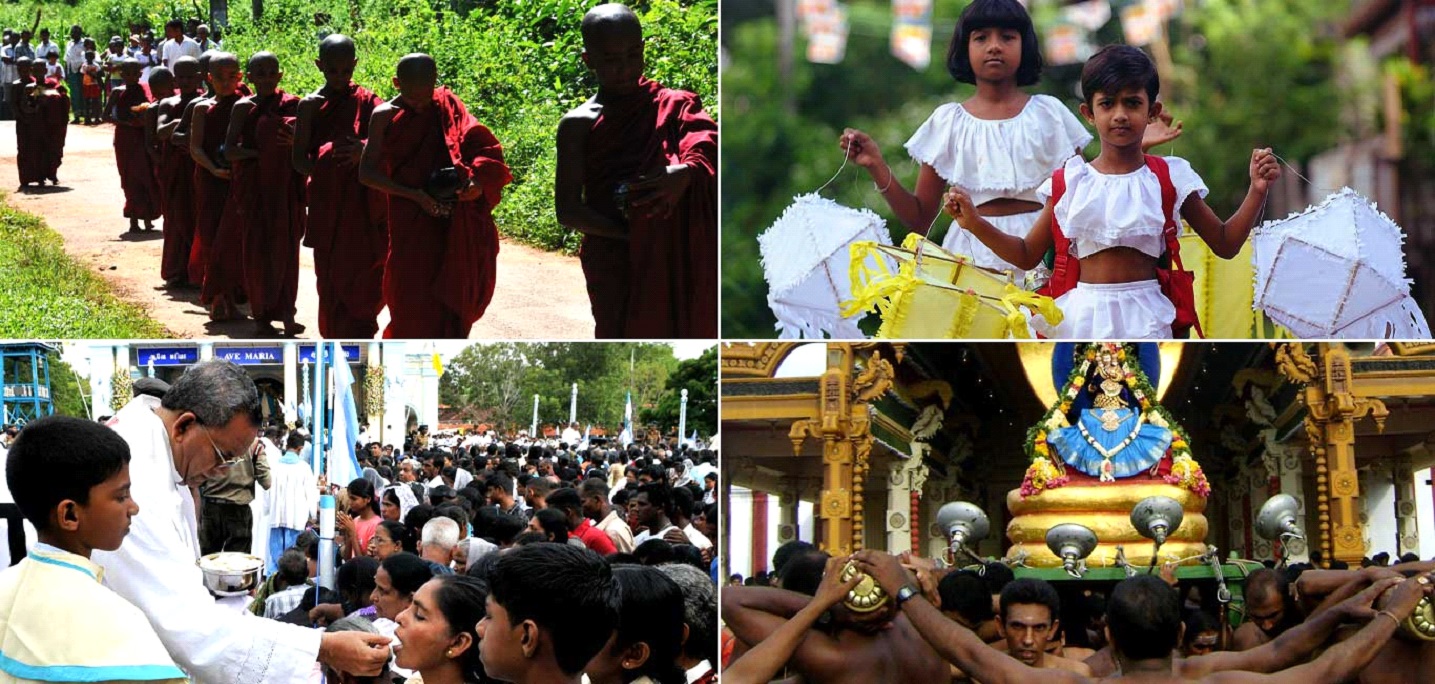
Economy
Sri Lanka is mainly an agricultural country. Rice is the main crop of the country whereas tea, rubber, and coconut are also important agricultural crops. Sri Lankan tea is world-famous as the brand name of "Ceylon Tea" and is being a major foreign exchange earner. Additionally, cocoa and spices such as cinnamon, cardamom, nutmeg, pepper, and cloves are important crops in terms of the foreign earner. The public sector is dominant in the financial, utilities, health, and education sectors. Sri Lanka’s economic growth is expected to be around 7 % in 2021. Sri Lanka is expected to increase its foreign remittances mainly from Sri Lankans work abroad and tourism. Tourism also gained momentum after the 26-year war ended in 2009 and is considered a major source of revenue. Much focus has been on tourism with huge government investments for infrastructure and promotions.
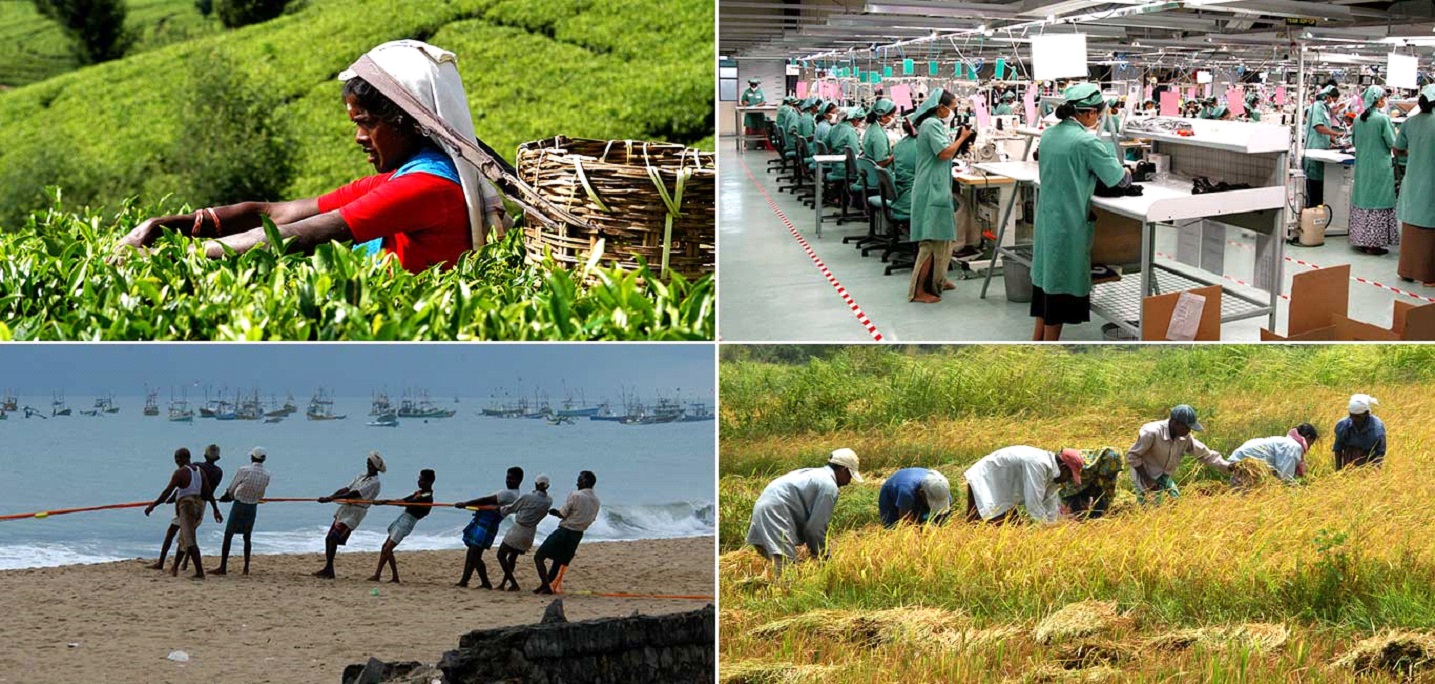
History
The legendary history of Sri Lanka has its roots in the epic of Ramayana centered Rama of India who rescued his wife from the clutches of Ravana, king of Lanka. The great chronicle Mahawansa records that Vijaya, son of a North Indian king arrived in Sri Lanka and established settlements in the 6th century BC. Whatever the legend or the history recounts, it is a reality that Veddas (hunter-gatherers) were Sri Lanka's original inhabitants whose origins is unclear.
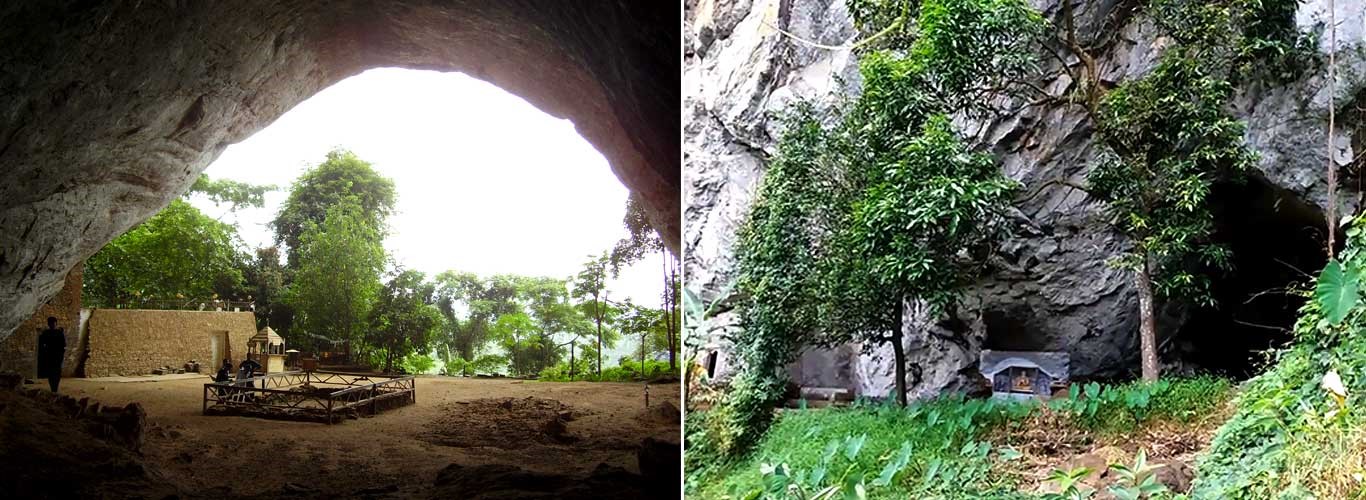
According to the Chronicle Mahawamsa, Vijaya made settlements a few miles away from Anuradhapura by the side of Malwatu Oya (river) and other surrounding areas. However, Anuradhapura was founded in 380 BC by King Pandukabaya who ruled the country for 70 years. The most significant event in Sri Lankan history took place when Indian Emperor Asoka (247 BC) sent his son Mahinda (enlightened Buddhist monk) to convert the local king Devanampiyatissa into Buddhism. The event was followed by the arrival of the emperor’s daughter Sangamitta (Buddhist nun) along with the sapling of Bo Tree under which the Buddha attained enlightenment. The arrival of Buddhism laid the foundation for the distinguished cultural and hydraulic civilization of the island.
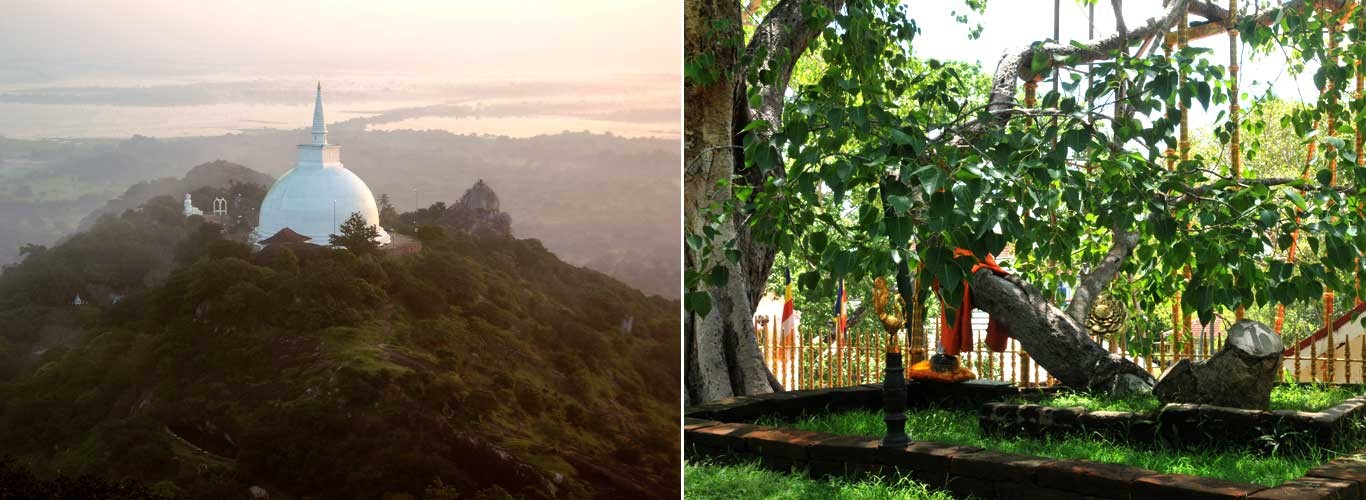
With the exception of the period of the invasion of the Tamil princes, Sena & Guttika (177-155 BC) and Elara (145-101 BC) and five South Indian invaders (44-29 BC) Anuradhapura remained the political and religious capital of Ceylon for about 1400 years. However, the kingdom was encountered inversions from south Indian invaders. On one such occasion King Dutthagaman in 161 BC, expelled the Tamil invaders and re-established the country under one flag. He built Ruwanwelisaya and Mirisavetiya stupas, the Brazen Palace, etc. King Wattagamini (29-17 BC) who regained power from five south Indian invaders made an immense contribution to Buddhism by constructing a number of cave temples including Dambulla the World Heritage Site. The writing of Tripitaka, sacred scriptures of Buddhism that was maintained in oral tradition for centuries, was a significant event in terms of religion and literature.
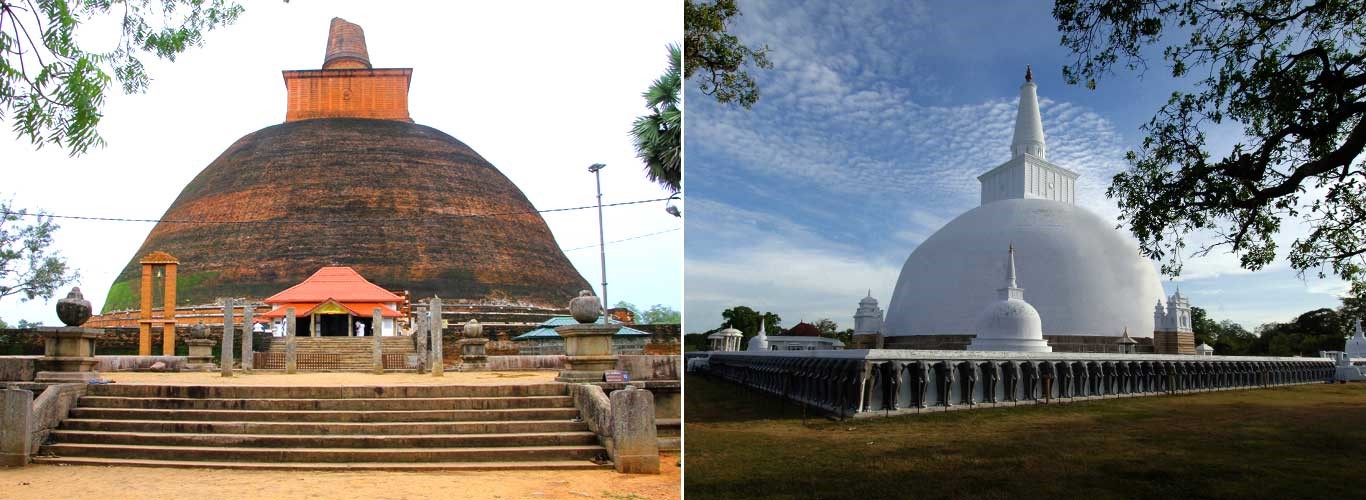
Since the beginning of the 1st century, a great hydraulic civilization began during the reigns of king Vasabha (67-111 A.D.) Detu Tissa (263-274) and his brother Mahasen (274-302) among whose achievements Minneri Reservoir is the greatest. The large Kalaweva which was built by King Dhatusena (455-473 A.D.) is compelling evidence of a thriving economy. The most outstanding monument of the Anuradhapura period is the rock fortress of Sigiri built by king Kasyapa (527-544). It is both palace and fortress and the ruins symbolize the ingenuity and creativity of its builders. The latter stages of the Anuradhapura kingdom were subjected to intermittent invasions from south India and the Sinhala monarchy found it difficult to stay in power for longer periods. In 993, the Chola Emperor Rajaraja 1 invaded Anuradhapura followed by his son Rajendra (1) in 1017.
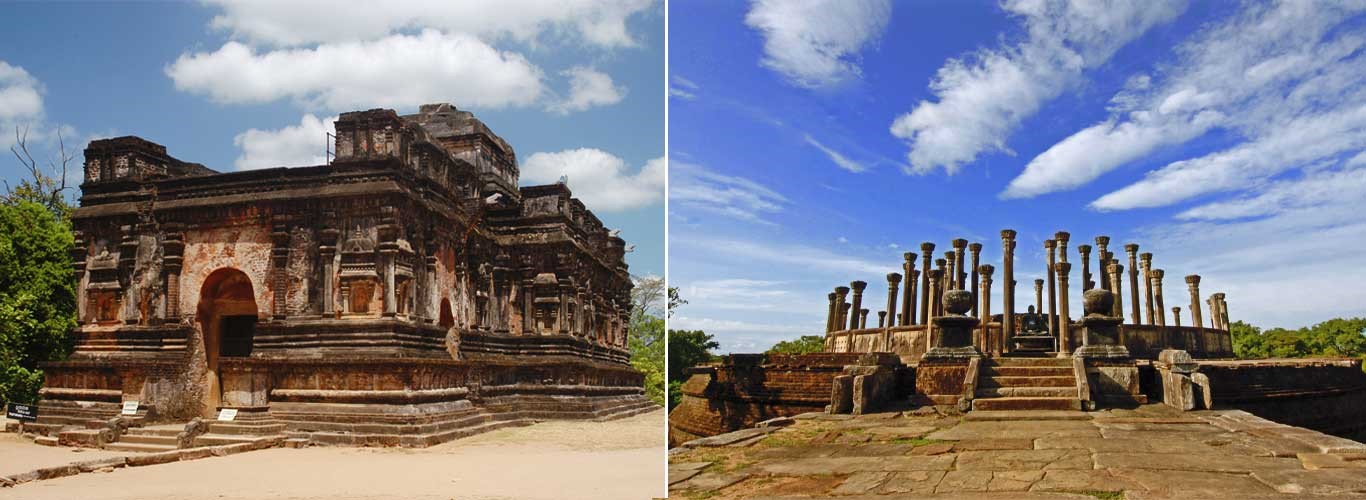
King Vijayabahu (1) who emerged from the southern part of Sri Lanka regained power after 14 years of battle with Cholas in 1070 to rule the entire country. This achievement is considered in similar significance to the victory of king Duttagamini in 161 BC over south Indian invaders. Apart from the unification of the country, Vijayabahu 1 devoted his time to the resurrection of Buddhism; develop abandoned irrigations, and building a just and fair society. His grandson, King Parakrambahu (1153-1186) rule the unified country for 33 years during which he built a fabulous garden-city along with admirable religious monuments such as the rock temple, constructed canals and large reservoirs such as the Sea of Parakrama, and reorganize the army to engage in warfare with countries including Myanmar and some South Indian provinces. King Nissankamalla (1187-1196) maintained the religious, agricultural, artworks of his predecessor during his reign. He was the last recognized and stable king in the Polonnaruwa kingdom. The state of anarchy followed his rule for 19 years that paved the way for Kalinga Magha to conquer Polonnaruwa in 1215. His tyrannical rule recorded as the worst south Indian invasion in terms of destructions of Buddhist monuments and oppression to the native Sinhalese who subsequently moved towards the southern part of the country.
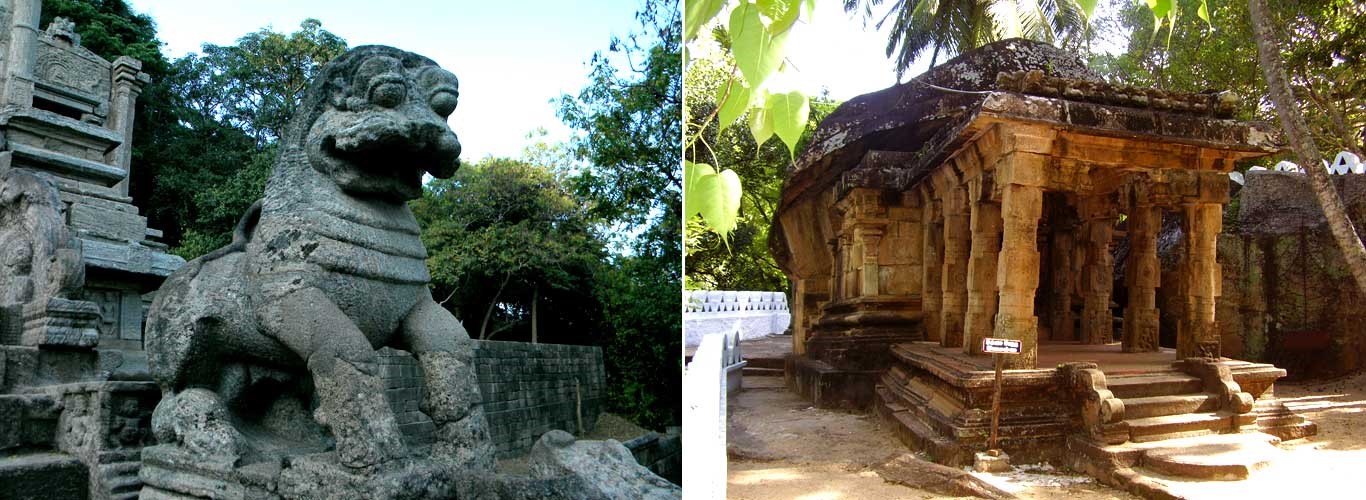
King Parakramabahu (11) who became the regional ruler in the Dambadeniya kingdom invaded Polonnaruwa in 1255 and defeated Kalinga Magha with the assistance of Pandya ruler of South India. The kingdom was shifted to Yapahuwa in 1272 and then to Kurunegala in 1300, followed by Gampola (1341-1415). The Kotte kingdom which was established in 1415 is significant during the reign of King Parakramabahu V1 (1415- 1467). Under his regime, the whole island has unified under one flag. His rule is famous for political stability as well as the thriving of literature, especially poetry. Kandy was chosen as the ruling centre during the Gampola period by King Vickramabahu (1473- 1511) and became more prominent under the reign of King Vimaladharmasuriya (1) in 1592.
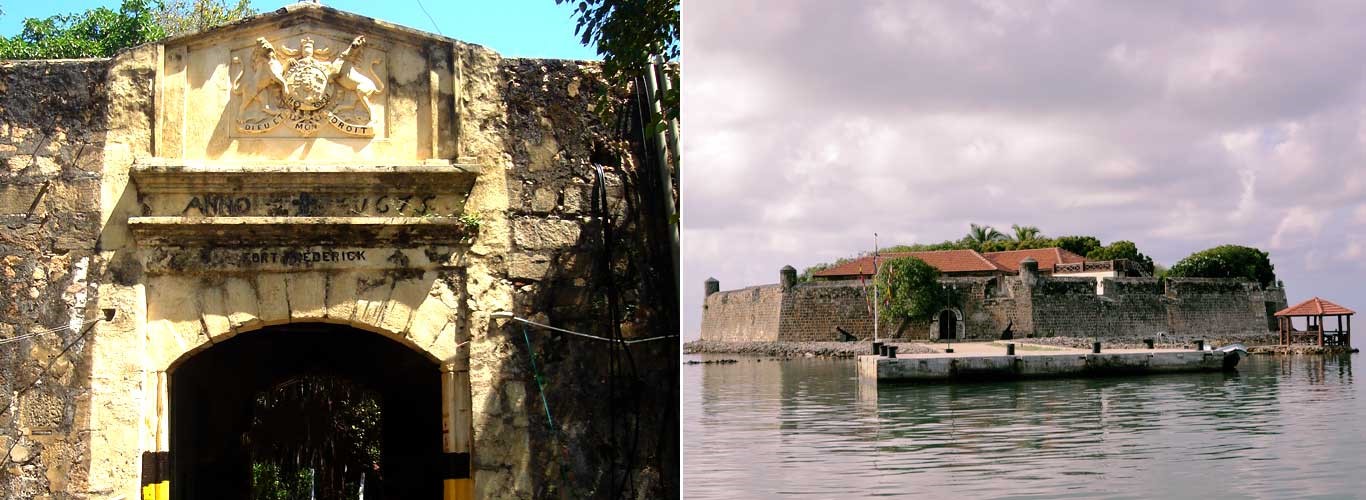
A new era in Sri Lanka's history began in 1505 when the Portuguese arrived. The Portuguese initially came here for spices trade but ultimately they stayed here and ruled the coastal regions until 1656. From 1656 to 1796, the Dutch ruled those areas while connecting more and more areas under their control. In 1796 the Dutch were displaced by the British. During this period only the highland Kingdom was able to retain its independence with its capital in Kandy. In 1815 the British were able to establish their rule over the whole island. By a process of peaceful, constitutional evolution, Sri Lanka was able to gain her independence in 1948.
Flora & Fauna
The southwestern wet zone is a tropical rain-forest with tall trees, broad foliage and dense undergrowth, and a tall canopy of hardwood trees, including ebony, teak, and silkwood. The central hill zone has cloud forests and some rare island areas populated by hardy grasslands. The remainder of the island forms the arid dry zone, with a sparser cover of trees, shrubs, and grasslands. Here also are some of the most spectacular orchids and of the plants used for traditional Ayurvedic medicines.
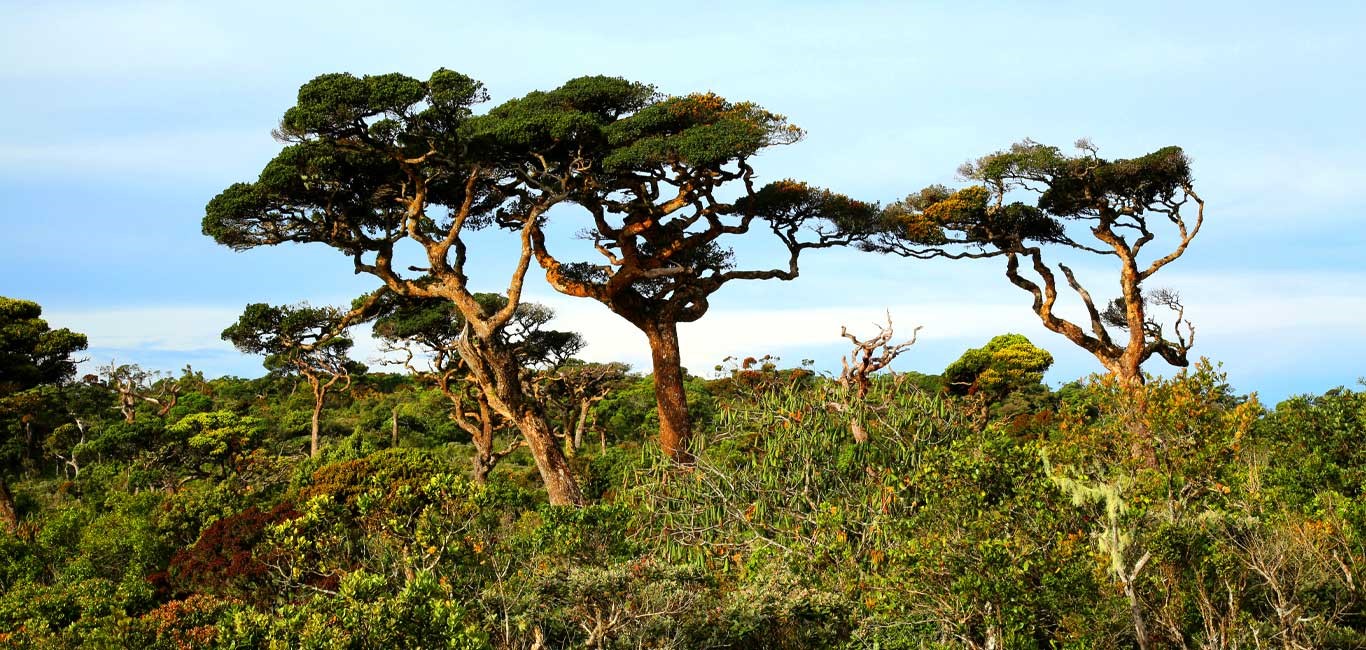
Sri Lanka has 86 mammal species including leopards, monkeys, and famous elephants. Other interesting mammals include sloth bears and jackals.
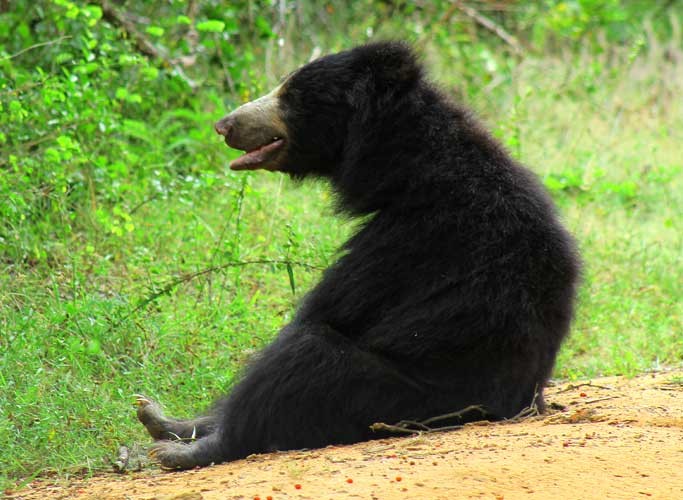
The national flower is the Nymphaea stellata (Sinhalese Nil Mahanel), the national tree is the Ironwood (Sinhalese Na), and the national bird is the Sri Lanka Jungle fowl which is endemic to the country.
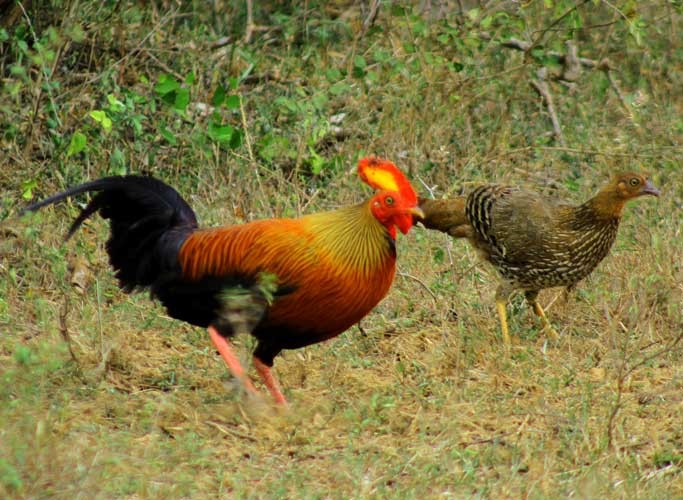
National Parks and Reserves
The first wildlife sanctuary at Mihintale in Sri Lanka was created by King Devanampiyatissa in the 3rd century BC after he was converted to Buddhism. Today, the country has three types of protected areas: national parks, strict nature reserves (where no visitors are allowed), and nature reserves. These localities are home to extraordinary flora and fauna and some of them are endangered species. The largest national park is Wilpattu (131,693 hectares) with dense forests and ample opportunity to witness leopards. Yala (East) National Park contains the Kumana mangrove swamp which is renowned for the variety of waterbirds in large numbers. Yala (West) is famous for elephants. Bundala National Park is an attraction for migratory birds and some elephants. These three national parks are bordered by the west and east coast forming an ecosystem of lagoons, swamps, and mangroves.
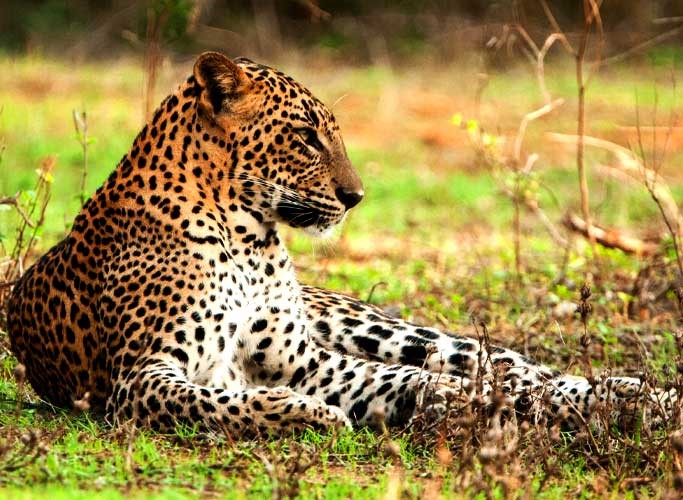
The Minneriya and Kaudulla national parks located Northwest of Polonnaruwa ancient city is dominated by Minneriya and Kaudulla tanks respectively. There is plenty of birdlife and elephant population apart from other Sri Lankan wildlife. The two parks are a mix of dry evergreen forest, scrub jungles, and grassy plains. The Gal Oya national park surrounds a large tank, the Senanayake Samudra in the east of Sri Lanka provides an important sanctuary for elephants and a variety of other wildlife including sloth bears, leopards, deer, and water buffaloes.
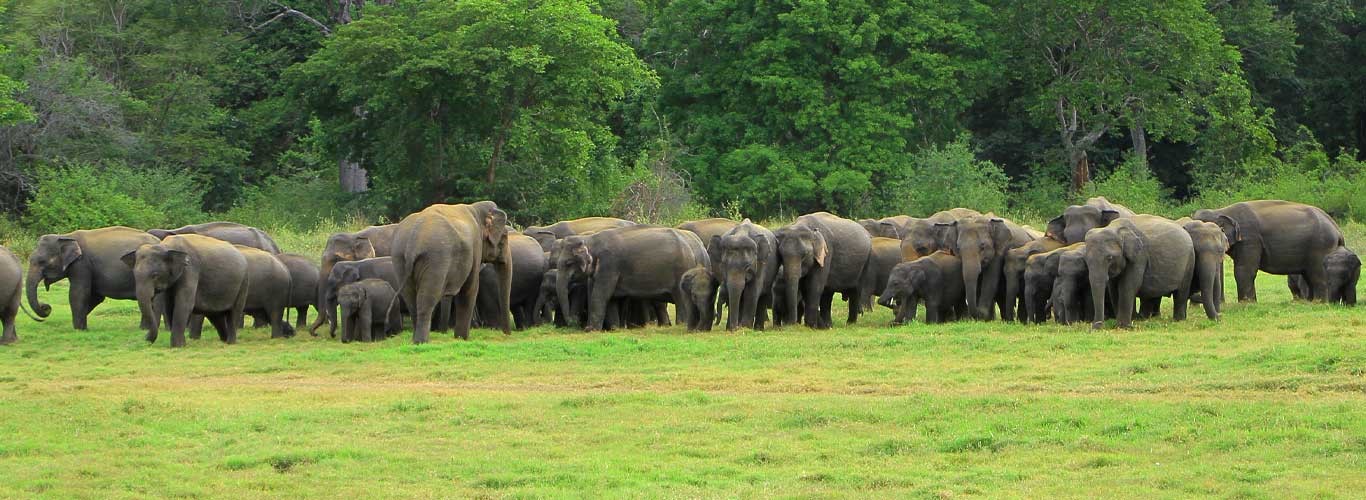
World Heritage Sites
The country is privileged with eight UNESCO World Heritage Sites six of which largely influenced by its history dates back to the 4th century BC. Among them, Sigiriya that was built on top of a 370m high rock in the 5th century BC was the masterpiece of the heritage. The palace of King Kassyapa is renowned for its ancient paintings (frescoes) and outstanding design on the rock which is sheer on all sides. The rest of the sites are ancient cities of Anuradhapura, Pollonnaruwa, Kandy, and Dambulla which represent the dramatic and rich civilization in the past. The port city of Galle is enriched with the largest remaining fortress in Asia built by European occupiers.
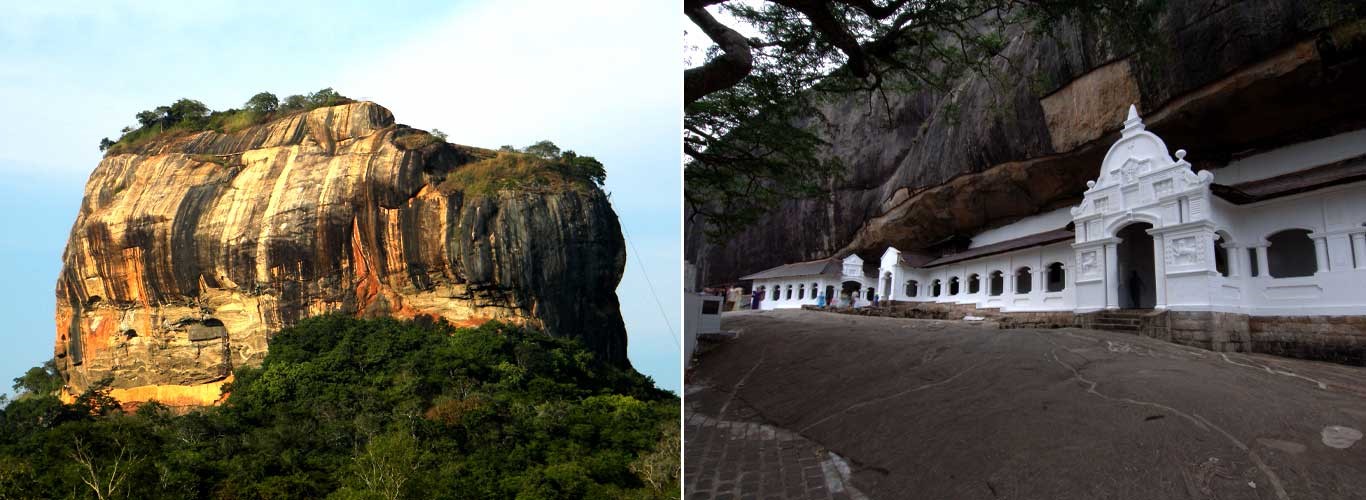
Sinharaja Forest Reserve, located in south-west Sri Lanka is the country’s only tropical rainforest. Most of the trees are towering to 150 ft (45m) with the next layer down topping about 100 ft (30m). More than 65% of the 217 types of trees endemic to Sri Lanka are found here. The endemic bird species, mammals, amphibians, butterflies, and reptiles are commonly found here. However, elephants and leopards are rarely found. Sinharaja is considered the major biodiversity hotspot in Sri Lanka.
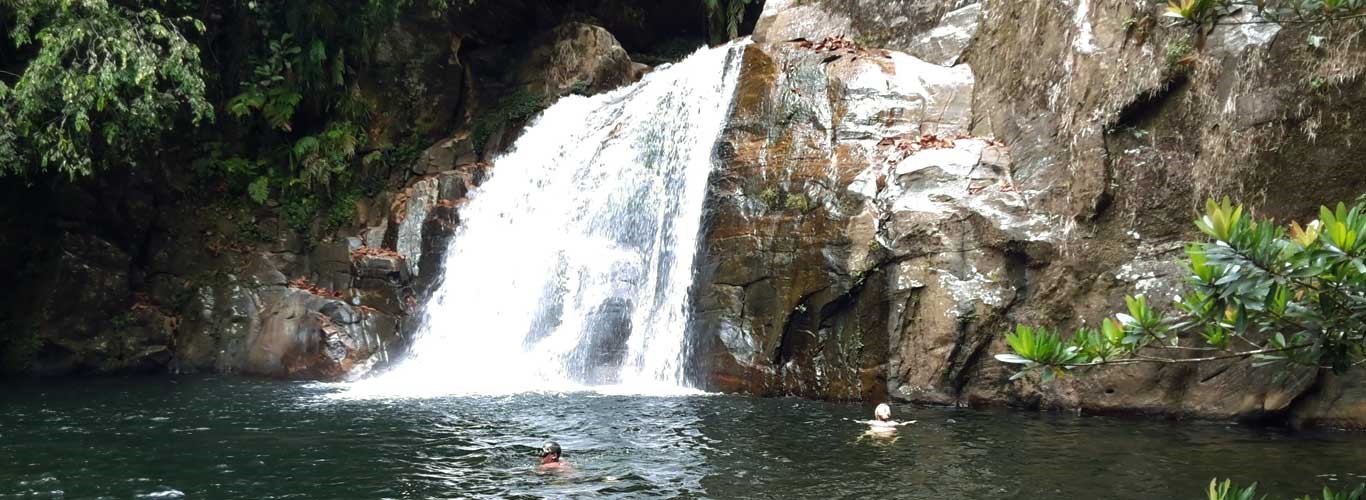
The Central Highlands of Sri Lanka that comprise Peak wilderness protected area, Knuckles conservation forest, and Horton Plains national park are the other major biodiversity hotspot in Sri Lanka. The Horton Plains National Park located in the highest plateau of the country at an altitude of 2100 – 2300 m is known for its beautiful landscapes and rare plant and animal life adapted to the cooler climate. It is covered with montane forest, wet patina grasslands, and marshes. It also serves as the catchment area of almost all Sri Lanka’s major rivers including the longest Mahaweli. The Horton Plains is home to an extraordinary range of fauna, including several endangered species such as the western-purple-faced langur (shaggy bear-monkey), the Horton Plains slender loris, and the Sri Lankan leopard. Sinharaja was inscribed on the UNESCO World Heritage List in 1988 due to its outstanding value of nature and Horton Plains made its entry under Central Highlands in 2010.
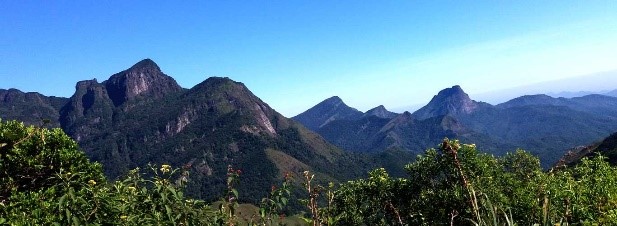

 +39 - 39 - 307 6 3730
+39 - 39 - 307 6 3730 +94 - 74 - 000 9208
+94 - 74 - 000 9208

Share this page